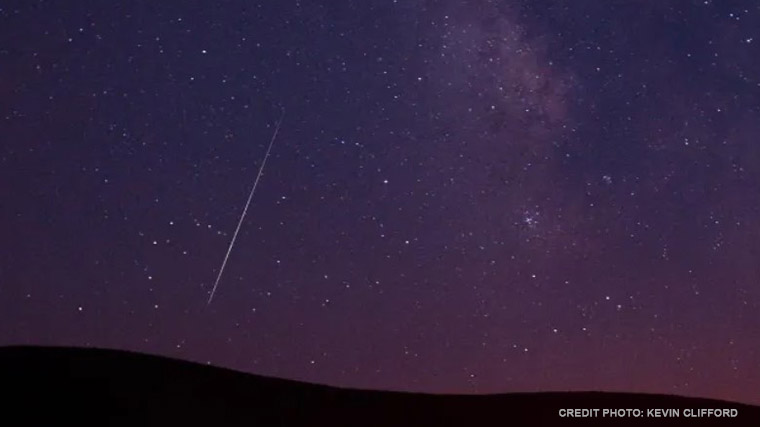Photographer Claro captured stunning images of the night sky during the Perseid meteor shower using a 360-degree camera. The strategic location of the Milky Way created a mesmerizing backdrop for the meteor shower as its glow lit up the sky and made it an incredible sight for observers.
The visibility of various constellations and celestial objects during the 2023 Perseid meteor shower was also a critical factor that added to the event’s appeal. Claro’s images of nightscapes, taken over four nights, included observations of numerous celestial objects, such as the constellation Andromeda and the zodiacal constellation Sagittarius. The glow of the Milky Way during a meteor shower made these constellations and celestial objects, among other things, more visible to the naked eye, allowing stargazers to observe a fascinating picture of the cosmos.
A full dome and 360º Virtual Reality nightscape composite of 100 meteors star aligned captured in 4 consecutive nights during Perseids meteor shower 2023. Credit: Miguel Claro / Space.com
The scientific explanation for the Milky Way’s glow and its effect on stargazing during the 2023 Perseid meteor shower lies in the unique phenomena of light pollution and dark skies. Sky darkness is a critical factor for optimal stargazing conditions, as it determines the visibility of celestial objects. During a meteor shower, the glow of the Milky Way, combined with minimal light pollution, resulted in a significantly darker sky, allowing for a more vivid and immersive stargazing experience. The zodiacal light, also known as “false dawn” or “false dusk,” is a faint, diffuse, and roughly triangular glow that appears in the night sky. This phenomenon is caused by sunlight reflecting off dust particles in our solar system that are concentrated in the ecliptic plane. The appearance of the zodiacal light can be compared to veined marble if observed through small binoculars. In addition, it is bright enough to cast faint shadows on the ground.
Michael Flynn in Pine Mountain Club, California, took this image on September 26, 2022. Credit: Author Michael Flynn / Earth Sky
The next meteor shower that will dazzle with its beauty will be the Orionids – a meteor shower active from September 26 to November 22, with a maximum of October 20 to 21.
The next meteor shower that will dazzle with its beauty will be the Orionids – a meteor shower active from September 26 to November 22, with a maximum of October 20 to 21.
In 2023, the impact of moonlight on meteor showers is predicted to be less than last year. This opens up rich opportunities for observing more prolific meteor showers, such as the Geminids and Perseids.
Bill Cook, a leading meteorite environmental expert at NASA’s Marshall Space Flight Center in Huntsville, Alabama, shares his skywatching tips and details on the top meteor showers to expect this year.
Banner image: This image beautifully captures the zodiacal light, a triangular glow seen best in night skies free of overpowering moonlight and light pollution. Credit: ESO/Y. Beletsky
Image credit:
https://www.space.com
https://www.space.com
https://earthsky.org

